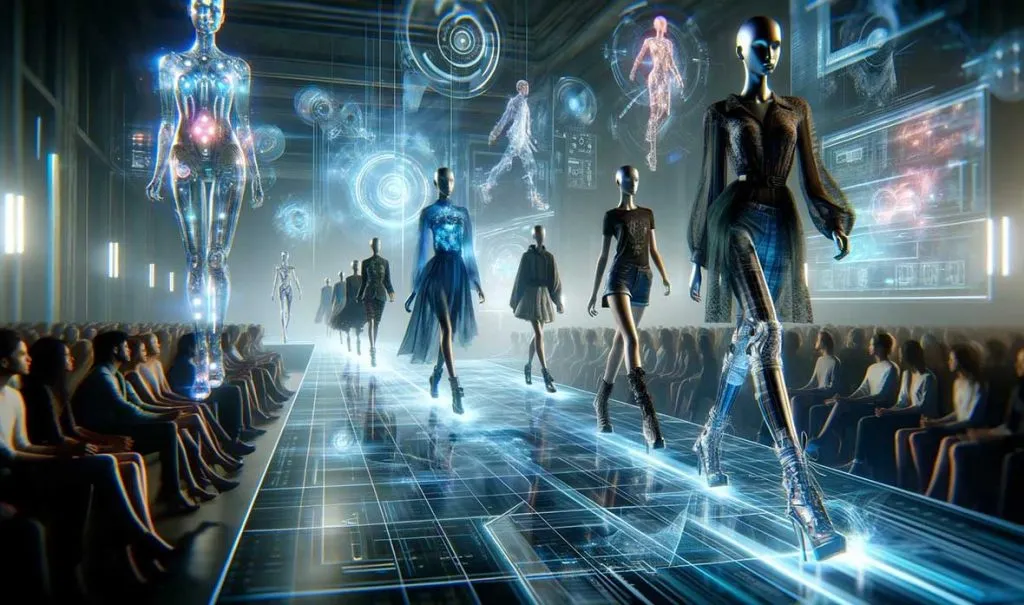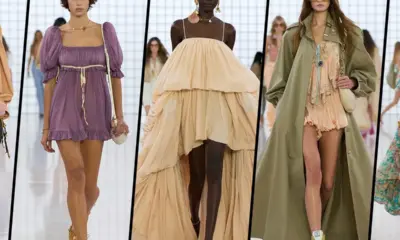Fashion
British Designers Go Digital: The Rise of Virtual Fashion Shows

Introduction
The British fashion industry has long been known for its innovation, creativity, and willingness to experiment. In 2025, it has taken that legacy a step further by embracing digital transformation through augmented reality and virtual reality. What began as a response to the pandemic’s disruption of physical events has evolved into a permanent shift in how fashion is presented, consumed, and experienced.
From the studios of London to the creative hubs of Manchester and Edinburgh, designers are adopting AR and VR to showcase collections in ways that blur the line between reality and imagination. Virtual fashion shows have become immersive artistic experiences that engage global audiences, reduce environmental impact, and democratize access to high fashion. This transformation is redefining not only the UK’s fashion scene but also the very meaning of the runway itself.
The Virtual Runway Revolution
In 2025, virtual fashion shows are no longer futuristic concepts, they are central to the British fashion calendar. Leading designers are combining cinematic storytelling with real-time digital design to create immersive showcases that can be experienced from anywhere in the world.
Instead of traditional catwalks, audiences now enter fully realized 3D environments where models appear as lifelike holograms wearing digitally rendered garments. The creative possibilities are boundless. Some designers project their collections onto virtual cityscapes of London, turning familiar landmarks into part of the runway. Others invite viewers to explore interactive fashion worlds where fabrics shimmer, change colour, and respond to user commands through AR devices or smartphones.
The production of virtual shows has also become a collaborative art form involving fashion houses, visual effects teams, and game designers. Digital fashion studios use advanced motion capture to record models’ movements before recreating them in virtual environments with incredible realism. Each show becomes a work of multimedia art that combines fashion, film, and technology in perfect harmony.
For many designers, the appeal of digital runways lies in their accessibility and sustainability. Virtual showcases eliminate the need for travel, venue construction, and physical sample production, significantly reducing carbon emissions. This aligns with the industry’s growing commitment to environmental responsibility while allowing creativity to flourish beyond physical limitations.
Augmented Reality: Fashion in the Palm of Your Hand
Augmented reality is revolutionizing how consumers experience fashion. Through AR technology, audiences can now interact with garments in real time, viewing designs in 360 degrees, trying them virtually, and even customising textures or colours through mobile applications. British designers are at the forefront of this evolution, using AR to bridge the gap between imagination and ownership.
Several major UK fashion houses have launched AR experiences alongside their digital collections. Viewers can project virtual models into their living rooms, watch them walk the runway, or zoom in to examine every detail of a garment’s stitching or silhouette. This direct engagement transforms passive spectators into active participants.
Emerging designers are also embracing AR as a way to level the playing field. The technology allows smaller brands to reach global audiences without the cost of staging elaborate physical shows. Independent creators can now host AR-powered pop-up runways, enabling audiences from Tokyo to Toronto to experience British fashion instantly and interactively.
Retail is undergoing a similar transformation. High-end boutiques in London are incorporating AR mirrors that allow customers to try on digital versions of outfits before purchase. These smart mirrors display realistic overlays of clothing on a shopper’s reflection, reducing the need for physical inventory and supporting sustainable consumption.
Technology and Creativity Converge
The marriage of technology and fashion has given rise to a new generation of designers fluent in both art and code. At institutions such as Central Saint Martins and the London College of Fashion, students are experimenting with 3D modelling, virtual garment design, and AI-generated fashion concepts. This digital literacy is reshaping how collections are conceived and produced.
Virtual fabrics, generated through simulation software, behave exactly like real textiles, enabling designers to test drape, texture, and movement before any fabric is cut. Artificial intelligence assists in predicting style trends and consumer preferences, while VR environments serve as digital ateliers where creative teams collaborate remotely in real time.
The cultural impact of this digital shift extends beyond the runway. Virtual fashion is becoming an art form in its own right, displayed in online galleries and NFTs, where digital couture pieces are collected like fine art. The intersection of technology and creativity has positioned British designers as leaders in the future of fashion innovation.
Conclusion
The rise of virtual fashion shows has transformed the British fashion landscape into a space where imagination knows no bounds. Augmented reality and virtual reality have turned runways into global, immersive experiences that blend artistry with accessibility. Designers are no longer constrained by physical limitations, they are empowered to explore new realms of creativity that unite sustainability, inclusivity, and innovation.
London, once the birthplace of punk and avant-garde fashion, is now the epicentre of digital couture. By embracing AR and VR, British designers are not only keeping pace with technological change but defining it. The virtual runway is no longer an alternative to tradition; it is the new standard for a connected, creative, and sustainable fashion future.












